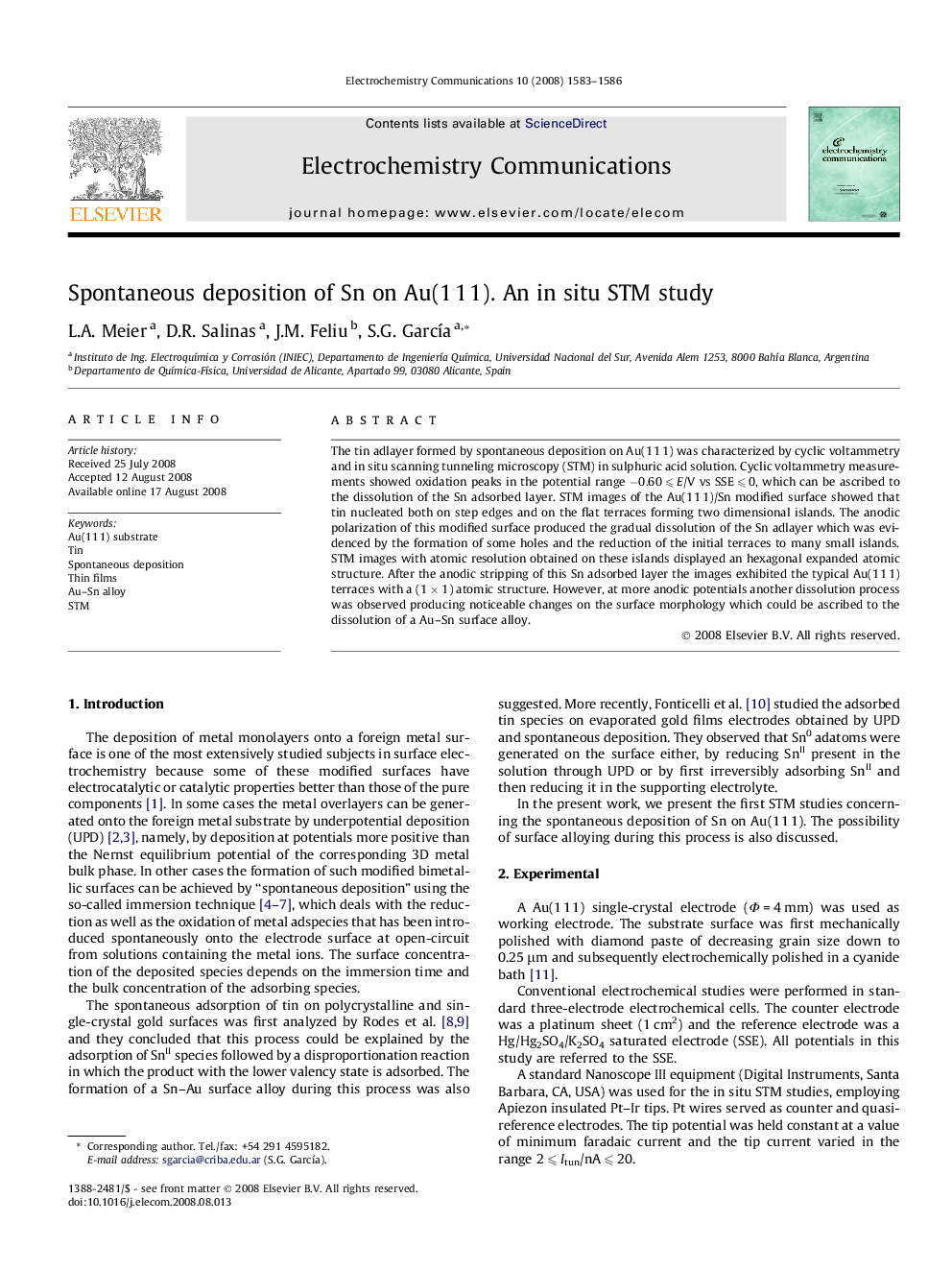| Article ID | Journal | Published Year | Pages | File Type |
|---|---|---|---|---|
| 181041 | Electrochemistry Communications | 2008 | 4 Pages |
The tin adlayer formed by spontaneous deposition on Au(1 1 1) was characterized by cyclic voltammetry and in situ scanning tunneling microscopy (STM) in sulphuric acid solution. Cyclic voltammetry measurements showed oxidation peaks in the potential range −0.60 ⩽ E/V vs SSE ⩽ 0, which can be ascribed to the dissolution of the Sn adsorbed layer. STM images of the Au(1 1 1)/Sn modified surface showed that tin nucleated both on step edges and on the flat terraces forming two-dimensional islands. The anodic polarization of this modified surface produced the gradual dissolution of the Sn adlayer which was evidenced by the formation of some holes and the reduction of the initial terraces to many small islands. STM images with atomic resolution obtained on these islands displayed an hexagonal expanded atomic structure. After the anodic stripping of this Sn adsorbed layer the images exhibited the typical Au(1 1 1) terraces with a (1 × 1) atomic structure. However, at more anodic potentials another dissolution process was observed producing noticeable changes on the surface morphology which could be ascribed to the dissolution of a Au–Sn surface alloy.
